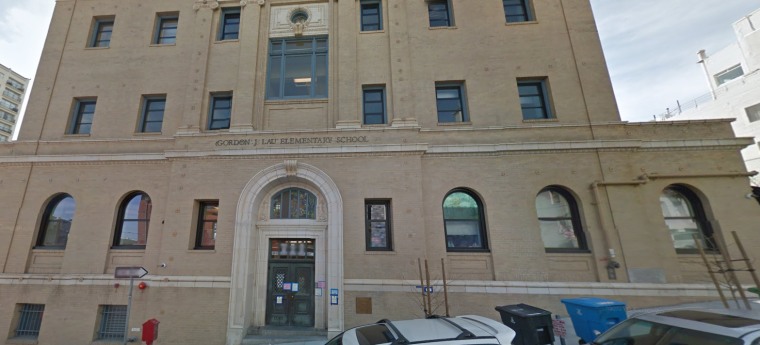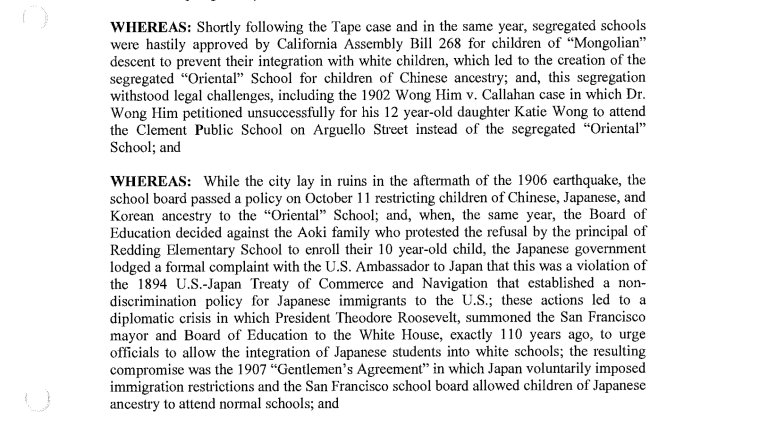The San Francisco school board voted unanimously Tuesday night to remove a century-old policy requiring that Asian-American students attend an “oriental” school.
The decision was intended to officially strike from the books a rule passed in 1906 mandating that children of Chinese, Korean, and Japanese descent attend an “Oriental School” in San Francisco’s Chinatown.

The board’s resolution goes even further and includes a proposal to create a mural at a historic school to capture the district’s “progression from its early anti-Asian history,” and a challenge to schools to increase their instructional materials and books on Asian Americans.
“We don’t want this to just be a symbolic action,” Commissioner Emily M. Murase, one of the resolution’s co-authors, told NBC News. “We want to put some substance to it, which includes knowing about this history, knowing about Asian-American history.”
The measure requiring students of Asian descent to attend the segregated school was passed at a time of rising anti-Asian sentiment in California.
“We don’t want this to just be a symbolic action. We want to put some substance to it, which includes knowing about this history, knowing about Asian-American history.”
Earlier, Chinese who made San Francisco their home began experiencing discrimination at the hands of Californians, who were fearful of Chinese immigrant labor taking away jobs. That sparked a number of state measures aimed at Chinese immigrants, and in 1882 Congress passed the Chinese Exclusion Act, the first time in the country’s history that it restricted immigration based on race and class.
Along with other students of Asian descent, San Francisco’s Japanese students were forced to attend the segregated school, prompting Japan’s government to protest that the move violated U.S.-Japanese treaties, according to the San Francisco School Board. In 1907, President Theodore Roosevelt himself got involved and met in Washington, D.C. with San Francisco school board members and the city’s mayor.
What emerged in February that year was the Gentlemen’s Agreement, which in part led to the school board’s allowing Japanese children to enroll in San Francisco public schools with white students.

For Murase, who grew up attending K-12 public schools in San Francisco and is the board’s first Japanese-American member, the 1906 resolution really hit home.
“I would have been in one of those seats in a classroom in a school here in San Francisco and plucked out with the passage of [that] board action,” she said.
While Japanese were integrated into schools with whites, other Asians were still relegated to the Oriental School, which was renamed in 1924 after Commodore Robert F. Stockton, who captured California during the Mexican-American War. In 1998, the school changed names again to Gordon J. Lau Elementary School, honoring the first Asian-American member elected to the San Francisco Board of Supervisors.
“I would have been in one of those seats in a classroom in a school here in San Francisco and plucked out with the passage of [that] board action.”
Over the years, the city’s school board has enacted many non-discrimination policies, Murase said, including serving as a sanctuary district for undocumented students.
Today, more than 40 percent of San Francisco’s public school children are Asian American, according to the board's resolution.
“We have been very committed to inclusiveness and diversity,” Murase said.
For the board, repealing the resolution from 111 years ago was one more step in that direction.
“In practice, the school board reversed its policy excluding Japanese kids, but just the Japanese kids,” Murase said. “The point of my resolution tonight is to rescind that school board action altogether, whether it’s Japanese, Korean or Chinese.”
Follow NBC Asian America on Facebook, Twitter, Instagram and Tumblr.